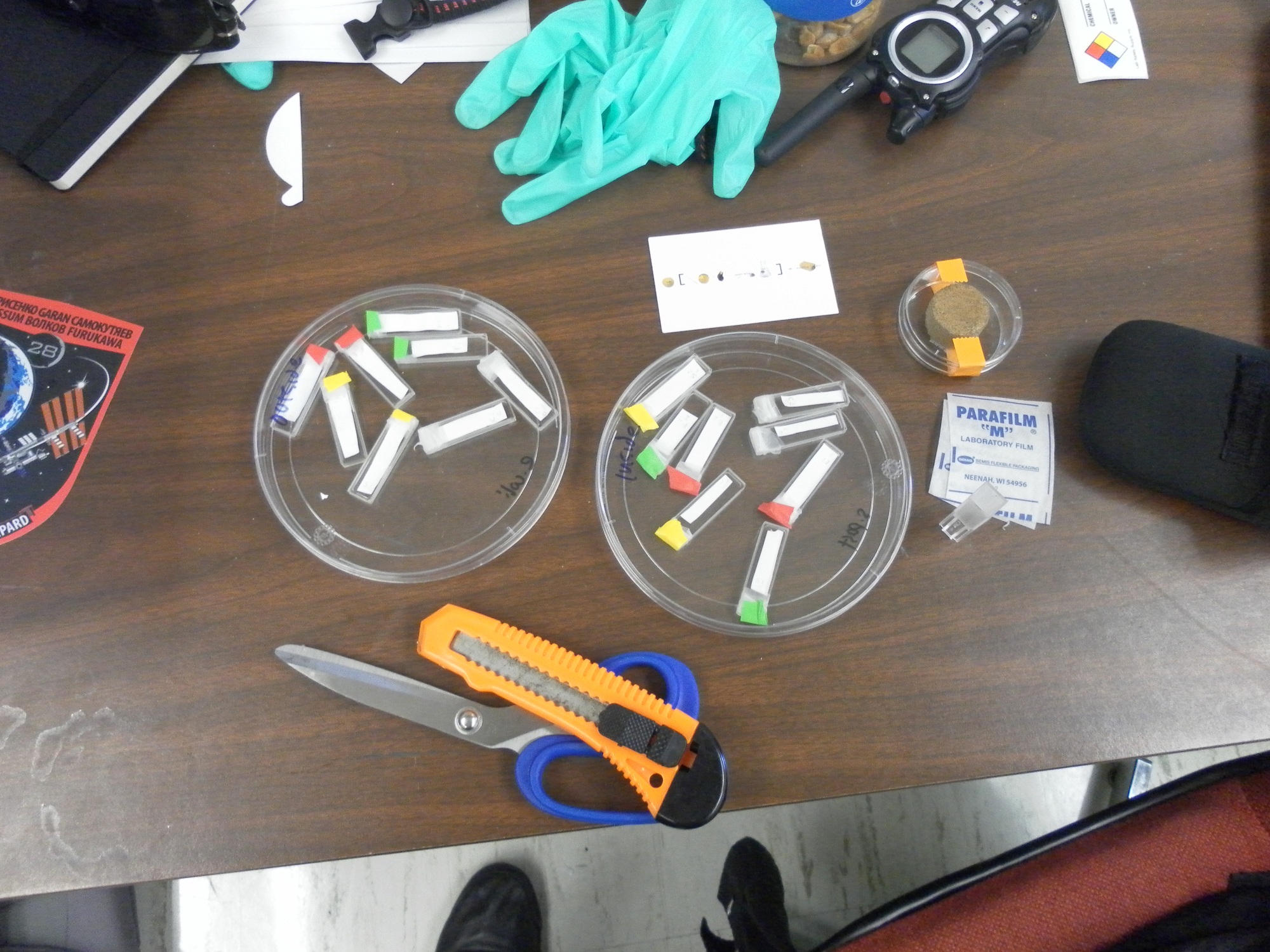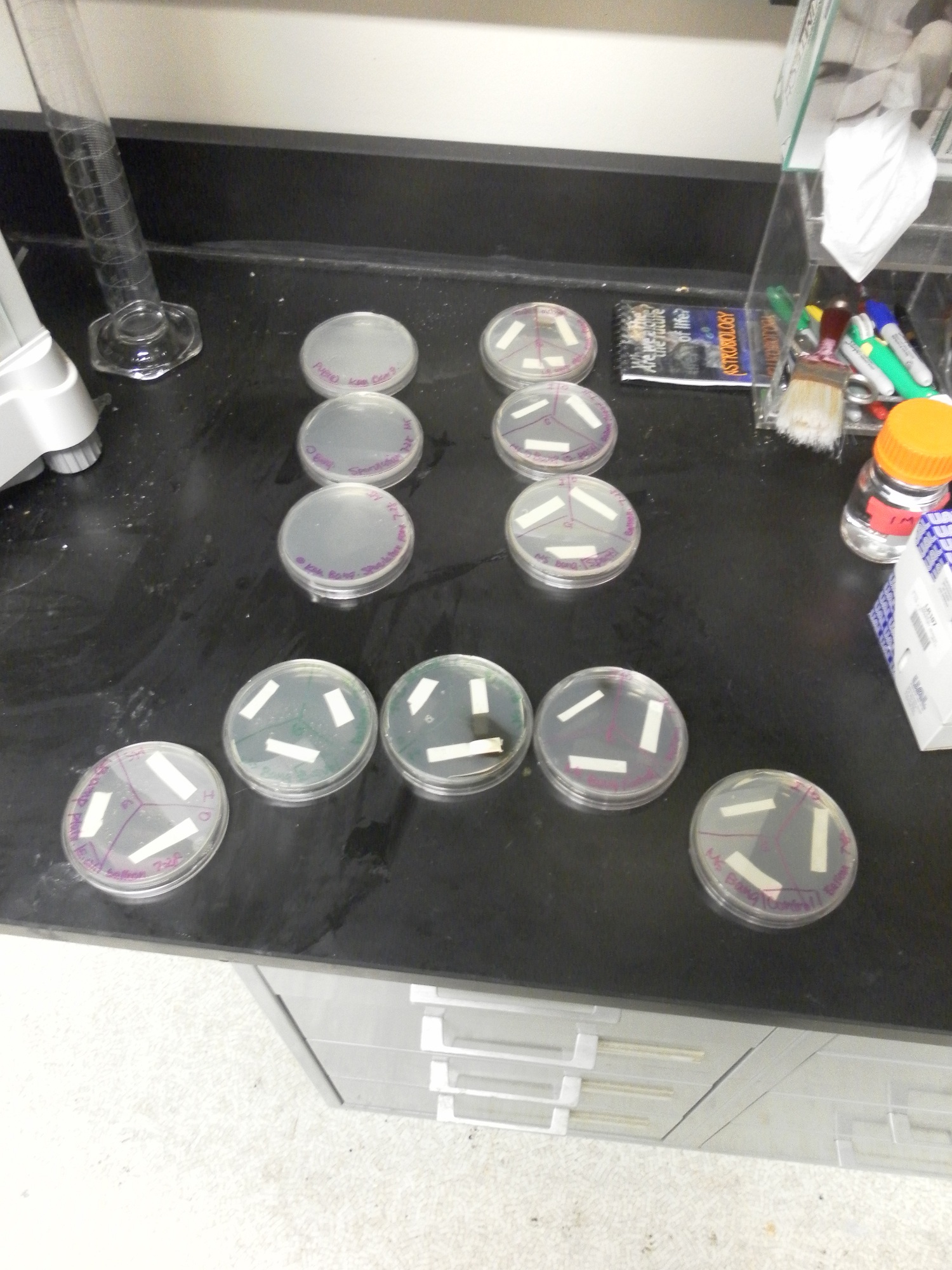Team:Brown-Stanford/REGObricks/Balloon
From 2011.igem.org
Maxsong123 (Talk | contribs) (→Balloon Flights) |
Maxsong123 (Talk | contribs) (→Survival in Extremophile conditions- Balloon Launches) |
||
| Line 25: | Line 25: | ||
Working at NASA Ames, we had the good fortune of meeting Jack Cackler, who was trying to prototype small balloon launches to the stratosphere. Located at 10 to 50 kilometers above the ground, the stratosphere has conditions that are out of this world: a temperature range of -56 to -3°C (it actually increases as you ascend), and atmosphere 0.001 percent of that of earth’s sea level. | Working at NASA Ames, we had the good fortune of meeting Jack Cackler, who was trying to prototype small balloon launches to the stratosphere. Located at 10 to 50 kilometers above the ground, the stratosphere has conditions that are out of this world: a temperature range of -56 to -3°C (it actually increases as you ascend), and atmosphere 0.001 percent of that of earth’s sea level. | ||
| - | To take advantage of this rare opportunity, we prepared two dried samples of ''S. pasteurii'' to be sent up in the balloon, to test the ability of the bacteria to withstand the extremes in temperature, depressurization and radiation bombardment. Note that the microbes we flew were <b>not</b> genetically altered. | + | To take advantage of this rare opportunity, we prepared two dried samples of ''S. pasteurii'' to be sent up in the balloon, to test the ability of the bacteria to withstand the extremes in temperature, depressurization and radiation bombardment. Note that the microbes we flew were <b>not</b> genetically altered, and all practice was done under proper FAA notification. |
[[File:Brown-Stanford-flightmaterials.JPG|300px|thumb|Materials for the Stratospheric Balloon Flight]] | [[File:Brown-Stanford-flightmaterials.JPG|300px|thumb|Materials for the Stratospheric Balloon Flight]] | ||
Revision as of 16:47, 28 September 2011
Balloon Flights
Survival in Extremophile conditions- Balloon Launches
Working at NASA Ames, we had the good fortune of meeting Jack Cackler, who was trying to prototype small balloon launches to the stratosphere. Located at 10 to 50 kilometers above the ground, the stratosphere has conditions that are out of this world: a temperature range of -56 to -3°C (it actually increases as you ascend), and atmosphere 0.001 percent of that of earth’s sea level. To take advantage of this rare opportunity, we prepared two dried samples of S. pasteurii to be sent up in the balloon, to test the ability of the bacteria to withstand the extremes in temperature, depressurization and radiation bombardment. Note that the microbes we flew were not genetically altered, and all practice was done under proper FAA notification.
Thorough Protocols for the preparation can be found here
Our first balloon went up to 80,000 ft (24 kilometers), from which the curvature of the earth was visible.
Unfortunately, our S. pasteurii cargo, as well as all other cargo, did not survive the first flight. first
Our second balloon went up to 110,000 ft (33.5 kilometers), where the atmosphere was slightly below that of Mars.
During our second flight (accompanied by the BBC ), we prepared the S. pasteurii inside [http://www.enasco.com/c/whirlpak/Whirl-Pak%26%23174%3B+Bags/ Whirlpak bags]. Surprisingly enough, upon retrieval, the the samples inside the Whirlpak bags exhibited urease activity! The ones outside the bags did not, though mysteriously enough both samples grew back on Bang media plates in seemingly equal quantities. Further experimentation must be done to ascertain the exact nature of the survival.
Our original grand plan was to have one final balloon flight, after our transformation of S. pasteurii with Newcastle 2009’s sporulation regulation gene, to see if induced sporulation could have increase the percentage of survivors. Unfortunately, difficulties in transforming S. pasteurii put this this plan on hold.
 "
"











